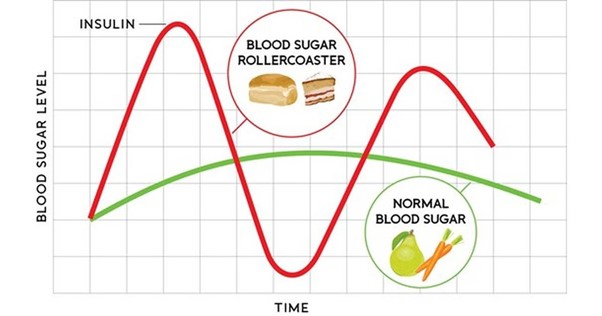If You Only Do One Thing For Your Health During Menopause, Balance Your Blood Sugar!
Why do I need to balance my blood sugar?
Taking control of your blood sugar levels is crucial for your health in general but even more so during perimenopause and menopause as when estrogen levels start to decline you may find your blood sugar levels become unbalanced. This may be due to the hormones estrogen and progesterone as they effect how your body reacts to Insulin (Lizcano and Guzmán 2014; Otsuki and Michio et al 2007). I always say to my clients if there is only one thing you do for your health control your blood sugar as this area is crucial to support a healthy menopause. If you focus on getting this right many of your menopausal symptoms may settle down or even go away (Marlatt and Gavin 2022; Poehlman 2002).

When you eat starchy/sweet, processed foods or sugar loaded drinks and alcohol they are broken down in the body into a sugar called glucose. This is carried around in the blood stream and taken to cells which use it for energy. Keeping your blood sugar within the normal range may help you to manage your menopausal symptoms (Lynch 2021).
The level of glucose in the blood is carefully controlled by a hormone called insulin. After we eat, the amount of glucose in the blood rises. Insulin is released to bring blood glucose levels back down to ‘normal’ levels. However, if blood sugar rises too rapidly, the body can end up releasing too much insulin. This causes the blood sugar to swing to low again, making us feel tired, grumpy and hungry. This is sometimes referred to as the blood sugar rollercoaster. This can also have an effect on your menopausal symptoms like hot flushes, mood swings and anxiety (Petersen and Shulman 2018).

It is the hormone insulin that makes you fat and keeps you fat. Insulin is a fat storing hormone! The more insulin you produce, the fatter you become. What increases insulin levels? Prolonged intake of high GI foods. These are starchy, sweet foods and drinks such as cakes, white bread, bagels, biscuits, chocolate bar, cereals and packaged highly processed foods which release their glucose into the blood stream quickly, causing excess production of insulin. This excess load triggers bodily systems to convert surplus glucose into fat (DiNicolantonio and Mehta 2018).
The problem is that if this happens too frequently, the body starts to ignore the insulin message, a condition called insulin resistance. This can lead to permanently high blood sugar levels and more and more insulin being released. This further increases weight gain and may eventually lead to type 2 diabetes and a greater risk of other negative health outcomes, one of these being heart disease (Marlatt and Gavin 2022). High Glycaemic foods and caffeine trigger insulin peaks and fat storage. Eating low Glycaemic foods maintains energy levels and avoids insulin peaks. Glycaemic index diet is an eating plan based on how foods affect your blood sugar level (Zafar and Mills 2019).
The glycaemic index is a system of assigning a number to carbohydrate-containing foods according to how much each food increases blood sugar. The glycaemic index itself is not a diet plan but is a tool for guiding food choices (Jenkins and Dehghan et al 2021).




